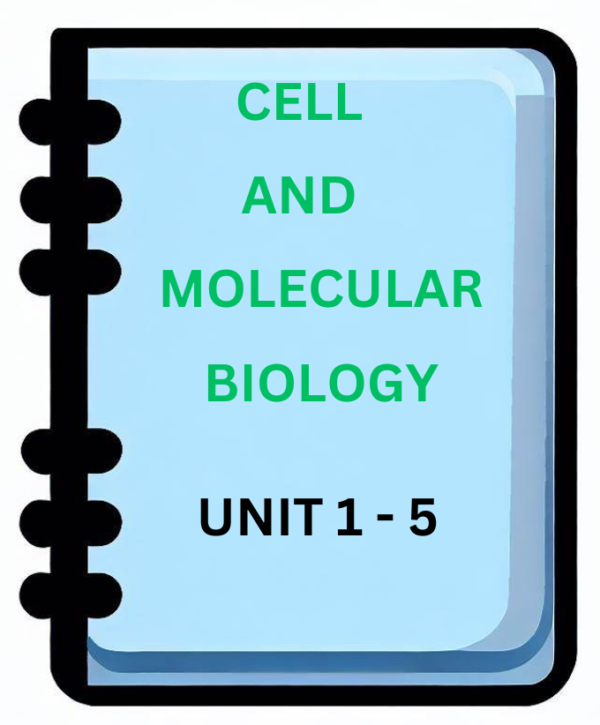
Free Download Cell and Molecular Biology Notes in pdf – Bpharm 8th Semester. High quality and Standard Notes.
Welcome to Pharmdbm.com
Pharmdbm provides standard or well-structured Notes for Bpharm students. The notes are free to download. Each semester notes of Bpharm are available on www.pharmdbm.com.
In this post you can download notes of Cell and Molecular Biology (BP808ET). All units are available to download for free.
Cell and Molecular Biology Notes Unit 1 – 5
UNIT – 1
a) Cell and Molecular Biology: Definitions theory and basics and Applications.
b) Cell and Molecular Biology: History and Summation.
c) Properties of cells and cell membrane. d) Prokaryotic versus Eukaryotic
e) Cellular Reproduction
f) Chemical Foundations – an Introduction and Reactions (Types)
UNIT – 2
a) DNA and the Flow of Molecular Information
b) DNA Functioning
c) DNA and RNA
d) Types of RNA
e) Transcription and Translation
UNIT – 3
a) Proteins: Defined and Amino Acids
b) Protein Structure c) Regularities in Protein Pathways
d) Cellular Processes
e) Positive Control and significance of Protein Synthesis
UNIT – 4
a) Science of Genetics
b) Transgenics and Genomic Analysis
c) Cell Cycle analysis
d) Mitosis and Meiosis
e) Cellular Activities and Checkpoints
UNIT – 5
a) Cell Signals: Introduction
b) Receptors for Cell Signals
c) Signaling Pathways: Overview
d) Misregulation of Signaling Pathways
e) Protein-Kinases: Functioning
Bpharm 8th Semester Notes
Biostatistics & Research Methodology
Pharmaceutical Regulatory Science
Quality Control & Standardization of Herbals
Pharmacological Screening Methods
Advanced Instrumentation Techniques
Dietary Supplements & Neutraceuticals
Pharmaceutical Product Development
Scope of Cell and Molecular Biology
Cell biology is a branch of biology that studies cells – their physiological
properties, their structure, the organelles they contain, interactions with their
environment, their life cycle, division, death and cell function. This is done both on a microscopic and molecular level. Cell biology research encompasses both the great diversity of single-celled organisms like bacteria and protozoa, as well as the many specialized cells in
multi-cellular organismssuch as humans, plants, and sponges.


